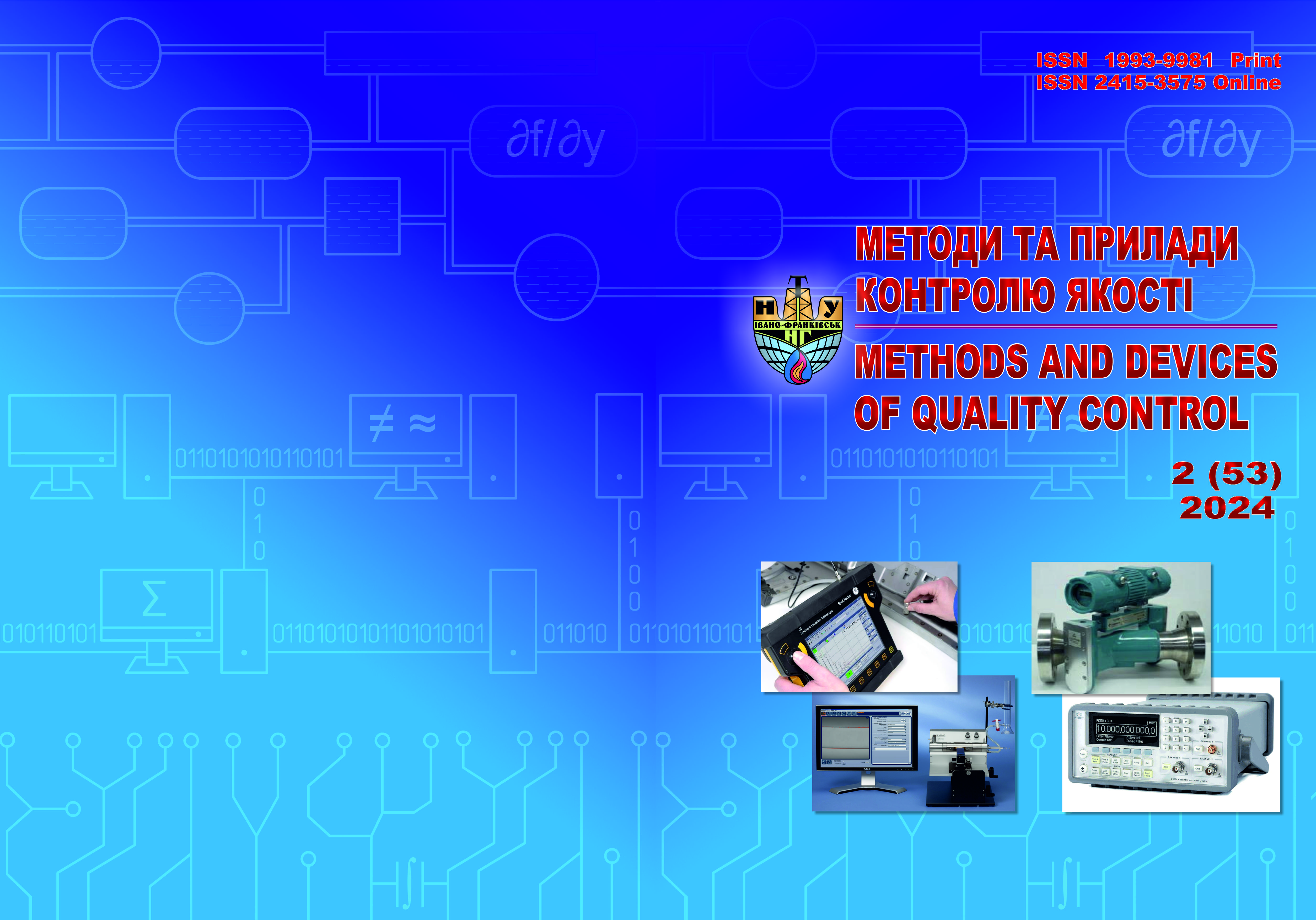ВИЗНАЧЕННЯ МОЖЛИВОСТІ ОТРИМАННЯ МІНІМАЛЬНОГО РАДІУСА МІСЦЯ ЗГИНАННЯ ПРИ ПРОФІЛЮВАННІ
DOI:
https://doi.org/10.31471/1993-9981-2024-2(53)-46-52Ключові слова:
неруйнівний контроль, вимірювання, властивості матеріалів, профілювання, місце згинання, міцність, пластичність, коефіцієнт запасуАнотація
Зростаюча потреба в якісних профілях зі сталей різних марок поставила перед виробниками гнутих профілів завдання щодо коригування оцінок міцності та пластичних властивостей вихідних матеріалів. Питання про руйнування матеріалів у процесі профілювання (насамперед про мінімальні допустимі радіуси згинання) раніше вирішувалося на базі їх відносного подовження δ10. Однак надалі було доведено, що коректнішим показником пластичності матеріалу для профілювання слід вважати відносне поперечне звуження ψш. Виходячи з оцінки пластичності, були розроблені методи визначення мінімально допустимих радіусів згинання. Однак, оскільки ψш при одновісному розтягуванні не дорівнює ψш при двовісному розтягуванні, яке має місце на зовнішній поверхні місця згинання, необхідно вводити коригувальні коефіцієнти. Необхідність урахування впливу схеми напружено-деформованого стану призвела до появи уточнених коефіцієнтів, точне визначення яких найчастіше є неможливим. З порівняння питомої роботи деформування при згинанні з критичною роботою руйнування в роботі отримано критичний радіус руйнування rк, який, при згинанні сталі Ст3сп, дорівнює 0,16. Для сталі 09Г2 критичний радіус руйнування дорівнює 0,27. У роботі встановлено, що зі збільшенням кута підгинання, величина критичного радіусу також збільшується. Технологічні радіуси згинання мають відрізнятись від розрахункових значень критичного радіусу згинання коефіцієнтом запасу міцності. Для поштучного процесу профілювання, коли мають місце наклеп і задирки на кінцях смуги, відносний мінімальний внутрішній радіус місця згинання слід визначати за формулою rmin=(2,8…3,5)rк. У роботі методом механіки суцільних середовищ із використанням поля швидкостей переміщень визначено питому роботу деформування елементарного обсягу місця згинання при профілюванні. З порівняння питомої роботи деформування при згинанні з критичною роботою руйнування отримано критичний радіус руйнування. В роботі встановлено, що технологічні радіуси місць згинання повинні відрізнятися від розрахункових значень критичного радіусу згинання коефіцієнтом запасу міцності.
Завантаження
Посилання
Semko V.O. Steel cold-formed thin-walled structures: monograph. Poltava: LLC "ASMI". 2017. 325 p. [in Ukrainian]
Nikolaev V.O. Calibration of rolling rolls: tutorial. Zaporizhzhia: ZDIA. 2015. 158 p. [in Ukrainian]
Moghadam A.E. Flexible Roll Forming of the Variable Depth Profiles. Submitted in fulfilment of the requirements for the degree of Masters of Research, Institute for Frontier Materials Deakin University. 2017. 159 р.
Mahajan P. FE Simulation of roll forming of a complex profile with the aid of steady state properties. Steel Research International. 2021. Vol. 89. No. 5.
Halmos G.T. Roll Forming Handbook. - Boca Raton: Taylor&Francis. 2006. 583 p.
Abeyrathna B., Rolfe B., Hodgson P., Weiss M. Local deformation in rollforming. The International Journal of Advanced Manufacturing Technology. 2017. Vol. 88, No. 9-12. 2405-2415 pp.


.png)




